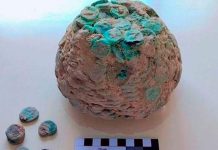Industrial use of P. pastoris is not as widespread as Saccharomyces cerevisiae, but it is nevertheless used in a variety of applications. There are several kinds of biotech industries using P. pastoris, such as the pharmaceutical industry. Protein expression is the basis of all applications.
Biotherapeutic production
Pichia pastoris has been used to produce more than 500 types of biotherapeutics, including IFNγ. The over-glycosylation of this protein expression system is one of its drawbacks since mannose structures contribute to immunogenicity.
The YSH597 strain was created in 2006 by a research group. Using the mammalian homologs of the fungal glycosylase enzymes, this strain can express erythropoietin in its normal glycosylation form. In this way, the protein was able to perform as it should due to its altered glycosylation pattern.
Enzyme production for the food industry
Pichia pastoris is used in food industries, such as breweries and bakeries, to produce enzymes that can be utilized as processing aids and food additives. Gene-modified Pichia pastoris, for example, produces enzymes that keep the bread soft. Meanwhile, in beer, enzymes could be used to lower the alcohol concentration.
Production of industrial enzymes
The production of industrial enzymes, such as glucoamylase and amyloglucosidase is produced by microbial fermentation, and their industrial production is unusual in that it does not require a supply of enzymes. By not storing large amounts of expensive raw materials, production can begin as needed. Products that use these enzymes include beer, bread, and cakes.
Production of ethanol from starch
Ethanol can be produced from starch through a process called fermentation. After breaking down the starch into glucose molecules, it is converted to ethanol through yeast. The resulting product is then distilled into a purer form.
Production of citric acid from glucose
Citric acid is a key ingredient in many food products, but the production of citric acid from glucose can be costly. A novel process was developed that uses an enzyme called trehalase to convert glucose into citric acid. This enzymatic process is more efficient and cheaper than the traditional chemical process, saving energy and reducing waste.
This newly developed process also allows for the use of a range of different sugars, including fructose and galactose. Heterologous proteins can be produced at low costs using Pichia pastoris. By secreting the protein of interest into the culture medium, this type of production can be easily scaled up and obtained GRAS (Generally Recognized As Safe) status.
Even though P. pastoris is not always successful at producing antibody fragments, results demonstrate that it produced TEG4-2c scFv at a high concentration without aggregates and with high purity.
A successful graft test was possible due to its efficiency against activated platelets and atheroma tissues. P. pastoris expression system adapted for the production of scFv for diagnostic or therapeutic purposes.
Recombinant proteins are often produced on the yeast Pichia pastoris. In order to decouple product formation from cellular growth, it is imperative to understand its physiology at extremely low growth rates.
P. pastoris has not been studied using retentiontostat cultivation, which is an excellent method for studying microbes with extremely low specific growth rates. A steady-state glucose-limited chemostat culture was used to estimate maintenance energy requirements (mS) and maximum biomass yield on glucose (YX/S24 max).
During aerobic fermentation of microorganisms, oxygen is transferred through the medium and through the cell, which greatly influences metabolic fluxes through the pathways. This affects cell growth and production. Recombinant proteins are produced by methanol metabolism, which requires oxygen. Several steps are involved in the transfer of oxygen from the fermentation medium to the cell.
-
The transfer of bulk gas to the interface between gas and liquid
-
Diffusion across interfaces
-
Movement through stagnant areas
-
Bulk liquid transport
-
The second stagnant region is to be traversed
-
Infiltration of the cell aggregate by diffusion
-
The reaction is transported across the cell.

P. pastoris and Industrial Applications. Photo Credit – Creative biomart






